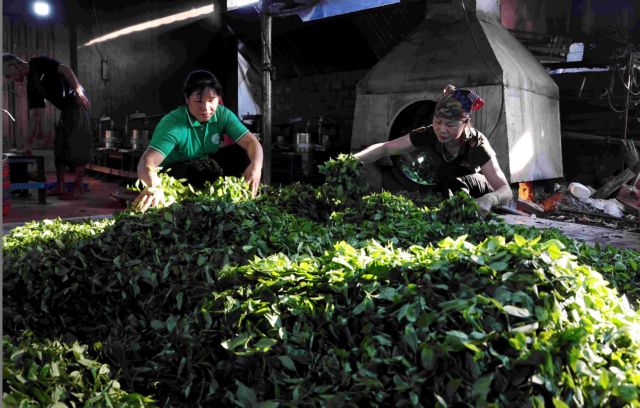 Features
Features

When she discovered her daughter had a rare genetic disorder, Lê Thị Mai Hương thought life was over. A community of like-minded parents gave her hope to carry on. Hồng Vân reports
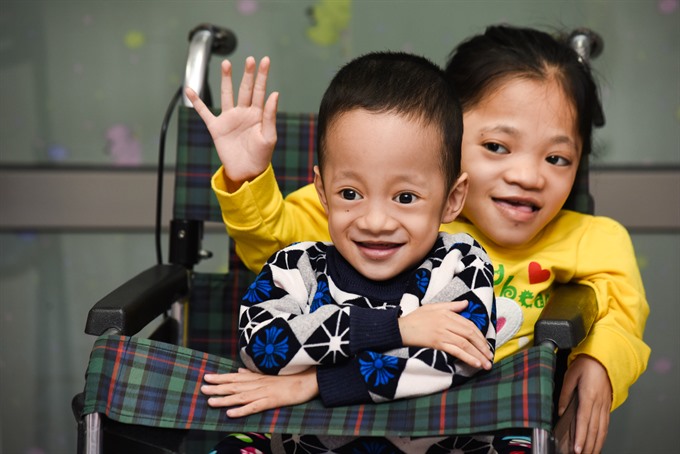 |
| Difficult circumstances: There are about 450 million people with rare diseases around the world. |
By Hồng Vân
When the eight-month-old daughter of Lê Thị Mai Hương kept vomiting and crying, she brought her to hospital with the hope of getting a diagnosis and treatment.
Yet it took six months and visits to several hospitals for her daughter, Nhã Quyên, to be finally diagnosed with urea cycle disorder, a rare genetic condition.
“After six months and many hospital visits, I was relieved and happy to know that finally doctors could name my daughter’s disease. My family and I were hopeful that after treatment, she would grow up, go to school and would no longer have to see doctors every week like before,” Hương said.
Yet when the doctor explained more about the rare disease and she also researched it by herself, Hương started to understand that the disorder will be present throughout her daughter’s life.
Urea cycle disorders are hereditary metabolic disorders caused by a deficiency of one of the enzymes in the urea cycle responsible for removing ammonia from the bloodstream. These disorders represent a substantial cause of brain damage and death among newborns and infants.
 |
| Life changing: After her daughter was diagnosed with a rare disease, Hương became more active in social activities - connecting with other families in a similar situation, organising social events for patients and attending conferences. |
The symptoms of urea cycle disorders, like other rare diseases, are diverse and not typical, therefore, getting to a diagnosis is often a lengthy and complicated journey for the family of the patient.
“It was just painful. It was hard to breathe. I don’t know how to describe the feeling at that moment.
“I felt guilty that my daughter was born with that disease. I blamed myself. I thought to myself that I must have done something that caused my daughter to suffer that disease,” said Hương.
After that, Hương and her daughter visited the hospital frequently. Minor changes in the weather could make her daughter’s symptoms worse. To Hương, even beautiful moments in nature could threaten her daughter’s health.
“I still vividly remember when my daughter was three, I was driving on Thăng Long Bridge to work. The previous day, it was gloomy and cloudy but on that morning, the first rays of sunlight started to break through the clouds. It was a beautiful moment but my first thought was we would have to send Quyên to hospital due to the changing weather.”
In August 2016, Quyên’s condition deteriorated. She only slept two to three hours a day and would cry almost all the time. Hương and her daughter had to stay at the National Hospital of Pediatrics (NHP) for 7 months.
The young girl was hooked up to an IV drip for so long it was a challenge for doctors to find a vein.
The doctors and nurses once had to use up a whole box of 50 needles to be able to find a vein to place an IV for Quyên, who was only three and a half years old at that time.
“Everyone understands how it feels when the needle pierces through your skin. Quyên had to endure 50 needles at a time. It was a huge pressure for me and even the doctors.
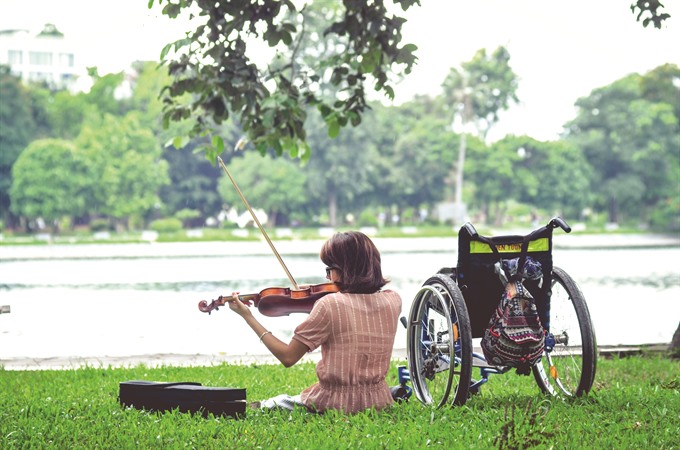 |
| Sweet sounds: 20-year-old Ly Ly suffers from brittle bone disease, yet she rents a house, has a job at a German design company and is living in Ha Noi by herself. Learning to swim and play musical instruments are among her goals. — Photos courtesy of Hear Our Stories |
“That time I was mentally and physically exhausted. Seeing my daughter suffer the enduring pain every single day for months was mental torture for me and my family,” said Hương.
“I felt like I was too cruel to have Quyên suffer that way. But it was a matter of life and death so I couldn’t decide to stop the treatment. I still had to choose life despite all the pain Quyên was suffering. As parents, we do our best to maintain life for our child even though it is hard.
“That was the time when I felt most hopeless. There was times when I wanted to give up but it was their eyes that kept me going after all those things. I notice that little boys and girls with rare diseases have very beautiful eyes. I could see hope for life inside their eyes. It was motivation for us,” said Hương.
Quyên is among more than 450 million people with a rare disease around the world.
A rare disease is defined as ‘a condition that affects fewer than 200,000 people’ in America. They are also known as orphan diseases as drug companies in America are not interested in adopting them to develop treatments.
68611311PM.JPG) |
| Labour of love: Hear Our Stories, released in February this year, features 22 stories from 22 families with children suffering from rare diseases. — VNS Photo Hồng Vân |
According to Dr Vũ Chí Dũng, head of the Department of Medical Genetics, Metabolism and Endocrinology of the National Hospital of Pediatrics, about 7,000 rare diseases are known to exist today, among which only 5 per cent have an approved drug treatment by the FDA (US Food and Drug Administration) and about 75 per cent of patients with a rare disease are children.
“Most patients with a rare disease need extensive care and support from their family for their whole life. It is a big burden for patients, families and society,” said Dr Dũng.
About 80 per cent of rare diseases are genetic in origin, directly caused by changes in genes or chromosomes and the genetic changes that cause disease can either be passed from one generation to the next or occur randomly in a person who is the first in a family to be diagnosed.
About 20 per cent of rare diseases, including infections, some rare cancers, and some autoimmune diseases, are not inherited.
“If the family of the husband or wife has a member with a rare disease, it is very important for them to do pre-marriage genetics consultation. Health checks before marriage and pregnancy are also crucial,” said Dr Dũng.
As the leading hospital in Việt Nam in diagnosis and treatment of rare diseases, the NHP has organised short term training courses and conferences for other hospitals so that patients have the chance to get an accurate diagnosis.
‘Diseases can be rare but love shouldn’t be’
Given the small patient population, the complexity of the biological mechanisms of rare diseases and scarcity of medicine for the patients, Dũng and other doctors at the National Hospital of Pediatrics suggested Hương establish a group of parents of children with rare diseases.
The group now has about 280 members.
“Quyên taught me a lot. She taught me about patience and compassion,” said Hương.
Before having Quyên, her life centred around her family. She was not very active in social activities or on social media.
“My life at that time was like a routine. I went to work every day and the rest of the time was for my family. I didn’t use zalo, Facebook or any kind of social media,” said Hương.
But after Quyên was diagnosed with a rare disease, Hương started to study the disease on the internet and contact other parents in similar situations for more information and advice.
She created a group for parents of children with rare diseases. The group is a platform for them to share information about their children, as well as care, medicine and dietary tips, and the source of milk for their children.
It is also a place where new members can learn about their child’s disease. Rare diseases are mostly related to genetic problems and it can take months for parents to understand how they work. Yet through this group, parents can learn about the disease in a week.
Hương and other members of the group have released a book titled Hear Our Stories with the support of doctors of NHP.
The idea for the project came from Trần Thị Phương Thảo, who’s son, Nghé, was diagnosed with hyperprolinemia.
Thảo is also the narrator of the book, which features 22 stories from 22 families with children suffering from rare diseases.
The characters in the book were born in different backgrounds – their parents are lecturers, accountants, farmers, grocers or factory workers from all over the country.
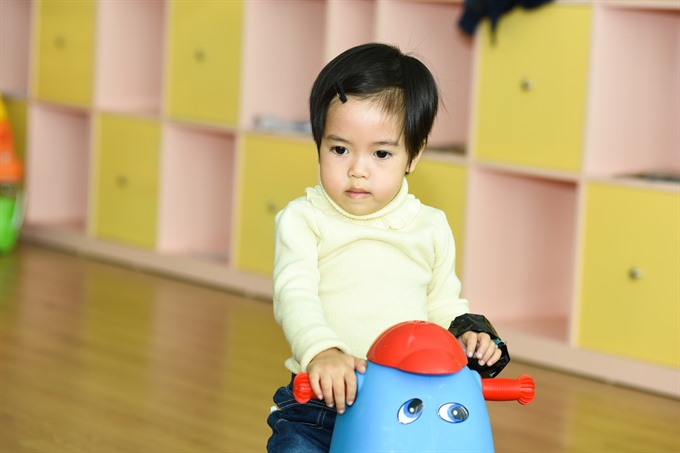 |
| Lack of treatment: Only 5 per cent of rare diseases have an approved drug regime by the FDA (US Food and Drug Administration). |
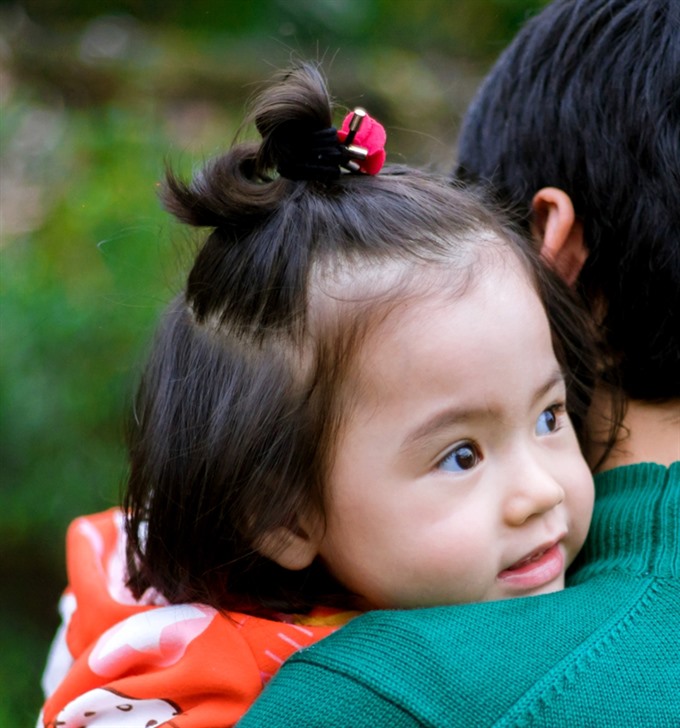 |
| Looking for life: Little boys and girls with rare diseases often have very beautiful eyes. One can see the hope in their eyes, said Huong. |
They are children as young as two or 20-year-old adults.
Some may be more fortunate than others who have both parents with unconditional love and support, while some have been abandoned by their fathers. Some couldn’t survive the disease. And some are hopeful about their future.
On the recommendation of doctors, Thảo met Hương and they soon became close friends. Together they supported other families, took part in social activities and attended genetics conferences.
“When I attended conferences about human genetics and rare diseases, I noticed that other countries had very nice books and photos about rare diseases. Meanwhile, representatives from Việt Nam had just a few souvenirs. So I came up with the idea of producing publications which could be used to introduce to other countries at future conferences,” said Thảo.
Hương said: “We hope that Hear Our Stories is a channel to share with the community so that the children with rare disease can receive better compassion and attention from the public.”
On the cover of the book is written “Diseases can be rare but love shouldn’t be. Share your love to patients with rare disease.”
“Hear Our Stories helps give a voice to families who have children with rare diseases. They can talk about the challenges they experience. The book contributes to a better understanding of the community about rare diseases,” said Dr Dũng.
Through Hear Our Stories, one mother got a free taxi ride because the driver’s wife had read the book. Another mother was given a discount on her rent because the house owner saw her and her daughter on television.
“It is like a miracle for our children when we feel compassion from the community,” said Hương.
Two weeks ago, Hương hired a private tutor for her daughter, who is now five years old.
“Recently, I started to think about the future. If everything is fine, next year Quyên will be able to stay with the tutor for whole day. And at the age of 15, she will be able to take care of herself and enjoy life in a much better way,” said Hương. VNS
The idea of the book Hear Our Stories won the Patient Advocacy Leadership Award 2016, an award initiated by Sanofi Genzyme Company aiming to encouraging bold new ideas and programmes to support the Lysosomal Storage Disorder (LSD) community worldwide. Sanofi Genzyme then gave funds for the winners to implement their projects. Hear Our Stories was released in February this year and is the first rare disease awareness book in Việt Nam.




